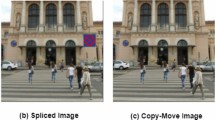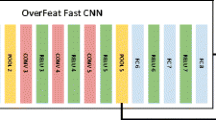Abstract
Image classification and image recognition are significantly impacted by the creation of Vision Transformers. It is no wonder that CNN architectures utilize multiple layers and a considerable number of hyper-parameters are necessary for training, as they are much more complex. While training and implementing, CNN uses a considerable number of resources. Alternately, Vision Transformers are the innovative architecture of neural networks that allows it to take in an image and break it into little pieces, then use an attention mechanism to search for correlations in the pieces. For localization of the attention mechanism, the transformers are well trained on small visual patches. With the introduction of image manipulation tools, much of the picture data available on the Internet today are designed to fool consumers into thinking the image is genuine. To authenticate photographs, we must utilize many different neural networks. The main purpose of this research was to detect forgery and locate the tampered image utilizing the transformers and attention mechanism concept. Using the RTX-3080 graphic card, the study effort is implemented on two benchmark datasets. These datasets are used to get the evaluation results, and they are compared to the state-of-the-art techniques. During the training and validation process, training accuracy of 98% and validation accuracy of 97% are achieved on benchmark datasets.
Access this chapter
Tax calculation will be finalised at checkout
Purchases are for personal use only
Similar content being viewed by others
References
A.H. Saber, M.A. Khan, B.G. Mejbel, A survey on image forgery detection using different forensic approaches. Adv. Sci. Technol. Eng. Syst. J. 5(3), 361–370 (2020)
M.A. Qureshi, M. Deriche, A bibliography of pixel-based blind image forgery detection techniques. Signal Process.: Image Commun. 39, 46–74 (2015)
K. Asghar, X. Sun, P.L. Rosin, M. Saddique, M. Hussain, Z. Habib, Edge-texture feature based image forgery detection with cross-dataset evaluation. Mach. Vis. Appl. 30(7–8), 1243–1262 (2019). https://doi.org/10.1007/s00138-019-01048-2
J. Dong, W. Wang, T. Tan, CASIA image tampering detection evaluation database, in 2013 IEEE China Summit and International Conference on Signal and Information Processing, pp. 422–426 (2013). https://doi.org/10.1109/ChinaSIP.2013.6625374
A. Jegorowa et al., Deep learning methods for drill wear classification based on images of holes drilled in melamine faced chipboard. Wood Sci. Technol. 55(1), 271–293 (2021)
Z.J. Barad, M.M. Goswami, Image forgery detection using deep learning: a survey, in 2020 6th International Conference on Advanced Computing and Communication Systems (ICACCS) (2020). https://doi.org/10.1109/ICACCS48705.2020.9074408
R. Salloum, Y. Ren, C.-C. Jay Kuo, Image splicing localization using a multi-task fully convolutional network (MFCN). J. Vis. Commun. Image Representation 51, 201–209 (2018)
I. Amerini, T. Uricchio, L. Ballan, R. Caldelli, Localization of JPEG double compression through multi-domain convolutional neural networks (2017). https://doi.org/10.1109/CVPRW.2017.233
A. Dosovitskiy et al., An image is worth 16 x 16 words: transformers for image recognition at scale. arXiv preprint arXiv:2010.11929 (2020)
S. Paul, P.-Y. Chen, Vision transformers are robust learners. arXiv preprint arXiv:2105.07581 (2021)
A. Vaswani, N. Shazeer, N. Parmar, J. Uszkoreit, L. Jones, A.N. Gomez, Ł Kaiser, I. Polosukhin, Attention is all you need. Adv. Neural Inf. Process. Syst. 30, 5998–6008 (2017)
E.W. Teh, M. Rochan, Y. Wang, Attention networks for weakly supervised object localization. BMVC (2016)
Compliance with Ethical Standards
Conflict of Interest: The authors declare that they have no conflict of interest.
Author information
Authors and Affiliations
Editor information
Editors and Affiliations
Rights and permissions
Copyright information
© 2022 The Author(s), under exclusive license to Springer Nature Singapore Pte Ltd.
About this paper
Cite this paper
Tankala, M.R., Srinivasa Rao, C. (2022). A Novel Image Falsification Detection Using Vision Transformer (Vi-T) Neural Network. In: Nayak, J., Behera, H., Naik, B., Vimal, S., Pelusi, D. (eds) Computational Intelligence in Data Mining. Smart Innovation, Systems and Technologies, vol 281. Springer, Singapore. https://doi.org/10.1007/978-981-16-9447-9_50
Download citation
DOI: https://doi.org/10.1007/978-981-16-9447-9_50
Published:
Publisher Name: Springer, Singapore
Print ISBN: 978-981-16-9446-2
Online ISBN: 978-981-16-9447-9
eBook Packages: Intelligent Technologies and RoboticsIntelligent Technologies and Robotics (R0)




